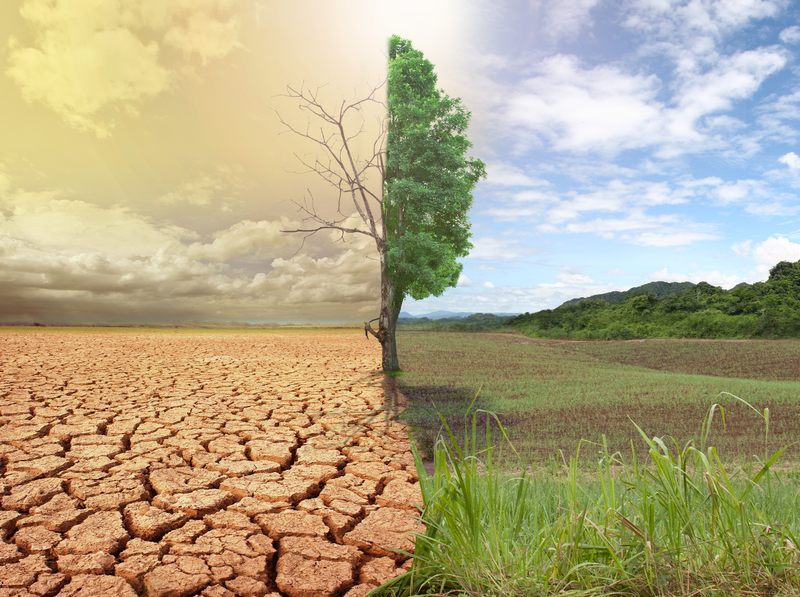How to Minimize Environmental Impact When Disposing of PPE Waste
PPE (Personal Protective Equipment) waste management has become a pressing global concern, especially since the COVID-19 pandemic drastically increased its production and usage. Items such as face masks, gloves, gowns, face shields, and other single-use protective gear are crucial for safety but can pose severe threats to the environment if not disposed of properly. This comprehensive guide will explore how to minimize the environmental impact when disposing of PPE waste, offer actionable steps, discuss sustainable alternatives, and explain the vital role each of us can play in reducing PPE pollution.
Table of Contents
- Understanding PPE Waste and Its Environmental Impact
- Current PPE Disposal Methods
- Eco-Friendly Ways to Dispose of PPE Waste
- Recycling and Reusing PPE
- Innovative and Sustainable PPE Alternatives
- Policy, Community, and Corporate Initiatives
- What Individuals Can Do to Minimize PPE Waste Environmental Impact
- Conclusion: Taking Responsibility for Eco-Safe PPE Waste
Understanding PPE Waste and Its Environmental Impact
The environmental impact of PPE waste disposal is far-reaching and deeply concerning. Most disposable PPE materials are made from synthetic polymers such as polypropylene, latex, vinyl, and polyethylene that do not biodegrade quickly. When not properly managed, these materials can cause:
- Soil contamination: Toxic microplastics and chemicals leach into soil, impairing plant growth and contaminating food chains.
- Marine pollution: Discarded masks and gloves often end up in waterways, posing dangers to aquatic creatures and ecosystems.
- Air pollution: Incineration of PPE, if not done in controlled facilities, releases harmful gases including dioxins and furans.
- Wildlife hazards: Animals may ingest or become entangled in PPE debris, leading to injury or death.
In 2020 alone, it was estimated that 129 billion face masks and 65 billion gloves were used globally every month. The improper disposal of such massive quantities emphasizes the urgent need to minimize the environmental impact of PPE waste and adopt sustainable strategies.
Current Methods for Disposing of PPE Waste
Understanding existing PPE disposal practices is crucial for identifying greener solutions. The main methods currently in use include:
- Landfilling: Most single-use PPE ends up in landfills. While convenient, this method promotes slow decomposition, microplastic generation, and long-term environmental harm.
- Incineration: Burning PPE at high temperatures can reduce volume and destroy pathogens but may generate toxic emissions if not managed with modern pollution controls.
- Open burning and illicit dumping: In some regions, insufficient infrastructure leads to open burning or illegal dumping, compounding pollution and human health risks.
- Autoclaving and Disinfection: Used primarily for medical PPE, this method disinfects waste via steam under pressure prior to landfill disposal or incineration.
The proliferation of these methods without proper oversight and innovation can have severe consequences for both people and the planet. Therefore, it's essential to move towards sustainable PPE waste management and eco-friendly alternatives.
Eco-Friendly Ways to Dispose of PPE Waste
Minimizing the environmental impact of disposing PPE waste is possible by implementing better practices at both organizational and individual levels. Some effective strategies include:
1. Segregate PPE Waste Effectively
- Separate PPE waste from general waste using designated bins. Clear labeling and color-coding help prevent contamination and facilitate proper handling.
- Encourage households, workplaces, and public spaces to use specific bins for masks, gloves, and sanitizer bottles.
2. Use Sealed Bins and Safe Collection
- Always dispose of used PPE in sturdy, sealed bags--preferably double-bagged--to prevent accidental exposure and littering.
- If available, use biohazard bins for medical waste or collaborate with local hazardous waste collection services.
3. Participate in Community PPE Recycling Programs
- Some communities and organizations have launched PPE recycling initiatives to collect items like masks and gloves for specialized processing and recycling.
- Look for local drop-off points, mail-in programs, or hospital recycling schemes that accept clean, uncontaminated PPE.
4. Avoid Littering and Open Dumping
- Never discard PPE on the ground, in waterways, or outside bins--this dramatically increases the risk of environmental contamination and wildlife harm.
5. Support Proper Incineration When Necessary
- Where recycling is not possible, advocate for the use of high-efficiency, pollution-controlled incineration facilities to safely destroy contaminated PPE with minimum emissions.
6. Compost Biodegradable PPE
- Certain new PPE products are made from compostable or biodegradable materials (e.g., PLA, PHA).
- Dispose of these in appropriate organic waste streams if uncontaminated or check for local industrial composting options.
Implementing these eco-friendly PPE waste disposal techniques can significantly reduce environmental impact and promote a circular economy.
Recycling and Reusing PPE: Reducing Waste at the Source
While not all PPE is recyclable due to contamination risks and material engineering, innovations are making PPE recycling and reuse more accessible. By extending the life cycle of these products, we can minimize the environmental footprint of PPE.
Recyclable PPE Materials and Programs
- Clean, unused PPE packaging, such as cardboard mask boxes or plastic wrappers, can usually be recycled with household waste.
- Certain companies and nonprofits specialize in PPE recycling programs, accepting bulk quantities from healthcare facilities and organizations.
- Thermoplastic-based PPE can be sterilized and mechanically recycled into composite construction materials, bricks, or even roads.
Promoting Reusable PPE Where Appropriate
- Switch to reusable cloth face masks, washable gowns, or face shields when transmission risk levels and safety guidelines allow.
- Encourage proper care, cleaning, and storage of reusable PPE to maximize product lifespan and reduce the need for single-use alternatives.
Innovative PPE Recycling Technologies
- Pyrolysis and advanced chemical recycling can break down used PPE into raw materials or even fuel.
- Partnerships among hospitals, universities, and recycling startups are helping to scale up these solutions.
Safe recycling and reusing PPE not only supports environmental sustainability but also conserves resources and reduces the burden on waste management infrastructure.
Innovative and Sustainable PPE Alternatives
The development and adoption of sustainable PPE alternatives can greatly minimize the overall waste footprint. Consider these eco-smart options:
- Biodegradable masks and gloves: Made from plant-based or compostable polymers that naturally break down without leaving persistent pollution.
- Recycled-content PPE: Utilizing post-consumer plastics or recycled textiles for gowns, aprons, or medical coverings.
- Antimicrobial reusable face coverings: Advanced textiles with built-in antimicrobial properties allow for multiple safe uses with less frequent washing.
- Innovative material research: Companies are assessing options like hemp, bamboo, or bioplastics for safer, greener PPE.
Choosing these green PPE options wherever possible is one of the best ways to prevent pollution at the source while maintaining health and safety standards.
Policy, Community, and Corporate Initiatives for Sustainable PPE Waste Disposal
Systemic change is crucial for lasting impact. Here's how government, community, and businesses are helping to minimize PPE waste:
Government Policies and Guidelines
- Mandating safe PPE waste segregation and treatment at source, especially in healthcare and public environments.
- Setting limits on single-use plastics and incentivizing biodegradable or recycled PPE procurement.
Community Education and Engagement
- Public awareness campaigns encourage responsible PPE disposal and promote local recycling initiatives.
- Voluntary clean-up events for collecting discarded PPE from urban and natural areas.
Corporate Responsibility and Innovation
- Companies are designing PPE with sustainability in mind and investing in end-of-life recycling solutions.
- Workplaces are providing staff with reusable PPE options, supporting green suppliers, and ensuring proper waste collection.
These sustainable PPE waste policies and initiatives reinforce the ripple effect that well-coordinated efforts can have on environmental health.
What Individuals Can Do to Minimize PPE Waste Environmental Impact
Your daily actions matter! Here are practical tips for reducing the environmental impact of PPE waste at home, work, or in public spaces:
- Choose reusable PPE: Opt for washable face masks and face shields when appropriate.
- Dispose of PPE properly: Use designated bins, double-bag used items, and never litter.
- Support eco-friendly brands: Buy biodegradable or recycled PPE when available.
- Limit unnecessary use: Only use single-use PPE when required for safety; otherwise, favor durable alternatives.
- Educate others: Help inform your family, friends, and community about the correct way to dispose of PPE waste responsibly.
By following these simple steps, each person can make a significant contribution to minimizing PPE pollution and protecting the environment for future generations.
Conclusion: Taking Responsibility for Eco-Safe PPE Waste
Minimizing the environmental impact when disposing of PPE waste demands collective action, innovation, and consistent effort. By understanding the dangers of improper disposal, adopting sustainable practices, supporting recycling programs, choosing eco-friendly PPE, and participating in community and policy initiatives, we can protect both public health and our planet.
Let's commit today to responsible PPE waste management and environmental stewardship--because safeguarding health should never mean sacrificing the environment's future.
Together, we can build a safer, cleaner, and more sustainable world for all.

